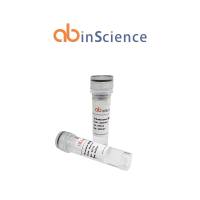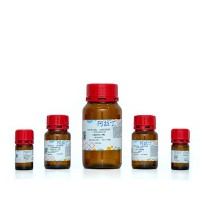Bacteria, cont. Growth and Reproduction
互联网
Flagella and motility
- monotrichous flagella - the bacterial cell has a single flagella
- peritrichous flagella - the bacterial cell has several flagella which are located at various sites on the cell surface (e.g. E. coli )
Motility is due to the presence of one or more flagella.
-
in peritrichous flagellate bacteria the flagella rotate independently of one another
- 95 of the time the flagella rotate counterclockwise
- 5 of the time the flagella switch directions and rotate clockwise
- When the flagella are all rotating counterclockwise, the flagella are bundled together and the bacteria travels in a straight line (i.e. it swims)
- When one flagella switches direction the bundle disassociates, and the bacteria tumbles
- alternative swimming and tumbling results in a three-dimensional random walk
- chemoattractants and repellents can interaction with receptor proteins in the cell envelope, which in turn influence the rate of tumbling when the cell is moving in a given direction
Growth and Reproduction
Essential requirements for growth include:
- supply of suitable nutrients
- source of energy
- water
- appropriate temperature
- appropriate pH
- appropriate levels (or absence) of oxygen
Nutrients
Cells need a source of:
- carbon
- nitrogen
- phosphorous
- sulfur
- other trace materials
Although a given bacteria typically uses a limited range of compounds, bacteria as a group can utilize a wide range of compounds as nutrients:
- sugars and carbohydrates
- amino acids
- sterols
- alcohols
- hydrocarbons
- methane
- inorganic salts
- carbon dioxide
Energy
Energy is needed for
- essential chemical reactions
- uptake of nutrients
- flagellar motility
Phototrophic vs chemotrophic bacteria
- phototrophic - energy derived from light source
- chemotrophic - energy is obtained by processing chemicals from the environment
Water
- 80 of the mass of typical bacteria is water
- Water is needed for growth and reproduction
- Dessication (extreme lack of water) is tolerated to different degrees by different bacteria
Temperature
- Growth proceeds most rapidly at the optimum growth temperature for a particular bacteria (and decreases as temperature is raised or lowered from this optimum)
- For any bacteria, there is a minimum and maximum temperature beyond which growth is not supported
Thermophilic bacteria
- optimum growth temperature is >45°C
- occur in compost piles, hot springs and ocean floor hydrothermal vents
- Pyrodictium have an optimum growth temperature of 105°C
Mesophilic bacteria
- optimum growth temperatures between 15 and 45°C
- live in a wide range of habitats
- since the human body is 37-42°C, human pathogenic bacteria are mesophiles
Psychrophilic bacteria
- optimum at 15°C or below
- minimum temperature of 0°C, or less
- maximum temperature of 20°C
- occur in polar seas
pH
- most bacteria grow optimally near neutral pH (7.0)
- acidophiles have an optimum pH with is more acidic (Thermoplasma acidophilum , found in hot springs, prefers pH 0.8-3, and will not grow at neutral pH)
- alkalophiles have an optimum at higher (alkaline) pH ranges (Exiguobacterium aurantiacum , found in natural alkaline lakes, prefers pH 8.5-9.5)
Oxygen
- bacteria which must have oxygen for growth are termed obligate aerobes
- bacteria which can grow only in the absence of oxygen are termed obligate anaerobes (e.g. environment which are isolated from the atmosphere; e.g. river mud, and within the intestines, for example)
- bacteria which normally grow in the presence of oxygen, but which can manage to grow in its absence, are termed faculative anaerobes
- conversely, bacteria which normally grow anaerobically, but which can manage to grow in the presence of oxygen, are termed faculative aerobes
Inorganic ions
All bacteria need low concentrations of certain inorganic ions in order to functions, e.g.
- iron for cytochromes (energy metabolism), and certain enzymes
- magnesium for cell wall stability
- manganese and nickel in metabolic enzymes
- high concentrations usually inhibit growth (e.g. salt has been used in the preservation of pork, beef and cod)
- some bacteria, halophiles , grow only in the presence of high concentrations of certain salts (e.g. sodium chloride). Halobacteriaceae grow only in the presence of 3-4 M NaCl. This amount of salt is needed to maintain the structure of the cell wall and internal molecular assemblies (e.g. ribosomes).
Growth in a single cell (e.g. Escherichia coli - a gram negative bacillus)
The cycle of events in which a cell grows, and divides into two daughter cells, is called the cell cycle .
"Slow Growth"
- Replication begins at a specific place on the chromosome - the origin or "ori" region.
- During "slow growth" each new daughter cell contains exactly one chromosome, because a new round of chromosomal replication does not begin until after completion of cell division
The cell division cycle can be thought of as a linear sequence of three periods : I , C and D
- C is the period during which chromosomal replication occurs
- D is the period in which the septum forms, and cell division occurs at the end of the D period
- I is the period between each successive initiation of chromosomal replication
For the above type of slow growth, the relationship between these three periods is as follows:
- I is also known as the doubling time of the bacterial growth
"Rapid Growth"
- A new round of chromosome replication begins before cell division occurs
- Each daughter cell has the equivalent of about 1 ½ chromosomes
- In rapidly growing E. coli cells the C period is about 42 minutes and D is about 25 minutes.
- The maximum doubling time for E. coli is about 20 minutes








